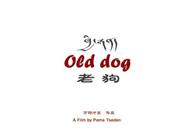|
|
||||
|
|
by Donald Levit  “It has always been a dream of mine to have a film shown at the Museum of Modern Art” -- in fact, a six-day New York première theatrical run -- “Thank you all for coming.” Thus director-writer Pema Tseden aka Wanma Caidan introduced Old Dog/Lao Gou/Kyhi Rgan, about which through a translator (from Mandarin) he would answer questions eighty-eight minutes later with La Frances Hui of cultural and cinema programs at Asia Society. Third and only school-graduated son of actual nomads, this long and short fiction author studied at prestigious Landscapes, observed Alexandra David-Neel of This reality clashes with the outside world’s romanticized view. But, Chinese censorship over their shoulders, artists tread softly. So overt criticism of sixty-and-more years’ “occupation” is muted, and the life that is pictured seems on the surface no more than the collateral fruit of modernization. But one sees assertions of impotence in the male (not female) sterility so quietly passed over and ignored by this film’s younger male. And with Tao minimalist science of essence, old Akhu (Lochey) does not want to sell his old dog to Han Chinese middleman Lao Wang (Yanbum Gyal). The sheepherder’s redeeming his four-legged possession and then refusing to accept eight times the original sale price from the newfangled son of a respected hunter of the past generation, hints at an overrun people’s not acknowledging defeat and insisting on its traditions even under the overlord heel. His shocking but admirable and admirably apt later act will underpin the strength of resistance, or stubbornness. The sorry canine in question has nothing attractive about it and no personality. Not cuddly or affectionate or apparently intelligent, its nondescript coat matted and its tail hard to distinguish as such, the cur happens to be a Tibetan nomad mastiff. The breed is fashionable among wealthy Chinese of the “mainland” -- i.e., There is more inane patter from television adverts and noise from balky cigarette lighters and two-stroke engines, than there is dialogue among these laconic phlegmatic rural characters. The visuals tell most all, and the film crew was gifted with a windfall, a long steady take of a ram doggedly rejoining the flock from which it has gotten separated, unrehearsed serendipity about the state of things on the high plateau. To the eye of the Occidental moviegoer, nothing much goes on. Underneath, however, roils a “cultural genocide” of generational, cultural, social and political upheaval. (Released by Icarus Films; not rated by MPAA.) |
||
|
© 2025 - ReelTalk Movie Reviews Website designed by Dot Pitch Studios, LLC |



